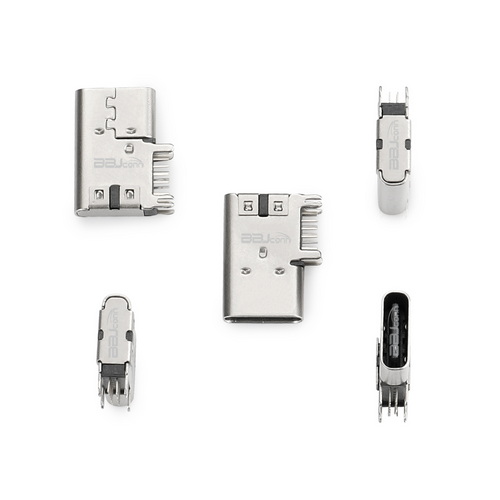USB Type-C Interface Aging Test: Big Data Analysis of Metal Fatigue After 100,000 Insertion and Removal Cycles
发布时间:2025-10-19作者:Shenzhen BBJ technology co., LTD点击:35
USB Type-C Interface Aging Test: Big Data Analysis of Metal Fatigue After 100,000 Insertion and Removal Cycles
As the mainstream high-speed transmission and charging interface, the durability of the USB Type-C interface has become a key indicator for evaluating product quality and reliability. Whether in smartphones, laptops, new energy vehicles, or industrial control equipment, the USB Type-C interface undertakes the task of high-frequency connection and power supply. To verify its long-term stability, the industry generally uses "insertion and removal life test" and "metal fatigue analysis" as core testing methods, with the 100,000 insertion and removal cycle test being the ultimate verification standard.
The aging test of the USB Type-C interface is mainly conducted through an automatic insertion and removal machine. The equipment simulates daily user operations, performing continuous insertion and removal actions from different angles and with different forces, and recording contact resistance, pin elastic recovery rate, and terminal displacement data in real time during the process. For example, the rated life of a standard USB Type-C interface is 10,000 cycles, while industrial-grade products with advanced reinforced designs can exceed 100,000 insertion and removal cycles. Test results show that under repeated stress, the fatigue of the metal pins increases non-linearly with the number of cycles. Microscopic plastic deformation typically begins after 60,000 cycles, and the gold layer wear rate reaches approximately 82% after 90,000 cycles.
Metal fatigue in the USB Type-C interface is mainly concentrated in the contact area between the pins and the casing. Phosphor bronze or beryllium copper substrates are commonly used due to their high elastic modulus and excellent conductivity; however, prolonged exposure to mechanical stress can lead to lattice slip and deformation accumulation. Scanning electron microscopy (SEM) observations revealed microcracks on the pin surface after 100,000 insertions and removals, with localized gold layer peeling. If the gold layer thickness is less than 1 μm, the exposed nickel layer is prone to oxidation after wear, causing a 12%-15% increase in contact resistance, which may lead to signal jitter and power loss during high-speed transmission.

To verify this trend, engineers conducted a large-scale data analysis of the electrical performance of the USB Type-C interface at different stages. By collecting data on contact resistance, insertion force, and extraction force over 100,000 insertion and removal cycles, a fatigue curve model was established. Data shows that between 10,000 and 50,000 cycles, the performance of the USB Type-C interface changes very little, with fluctuations controlled within ±3%. However, after 80,000 cycles, the rebound force of the spring pins decreases significantly, with the average insertion force decreasing by about 9%, indicating that the mechanical support capacity of the terminal has begun to deteriorate. Although it can still function normally within usable limits, it is more prone to poor contact in extreme environments (such as high temperature and high humidity).
Aging tests for USB Type-C interfaces are not only a means of verifying product lifespan but also an important basis for optimizing design parameters. By analyzing the insertion and removal fatigue data, engineers can adjust the pin thickness, spring angle, material hardness, and plating process to achieve a balance between performance and lifespan. For example, in high-frequency products, USB Type-C interfaces using a thickened gold plating layer (≥1.27μm) and a high-strength LCP insulating base show a contact resistance increase of only 4.8% after 100,000 insertion and removal cycles, significantly better than ordinary models.
The reliability of the USB Type-C interface represents the technological ceiling of a connector brand. Big data from aging tests and metal fatigue analysis not only reveals the patterns of microstructural changes but also provides a basis for improving materials engineering and manufacturing processes. In the future, with the widespread adoption of USB 4.0 and 240W fast charging protocols, the requirements for interface durability and conductivity stability will further increase.
Through scientific data analysis and experimental verification, the USB Type-C interface will continue to push its lifespan limits, maintaining accurate, stable, and efficient connections even in more demanding environments.